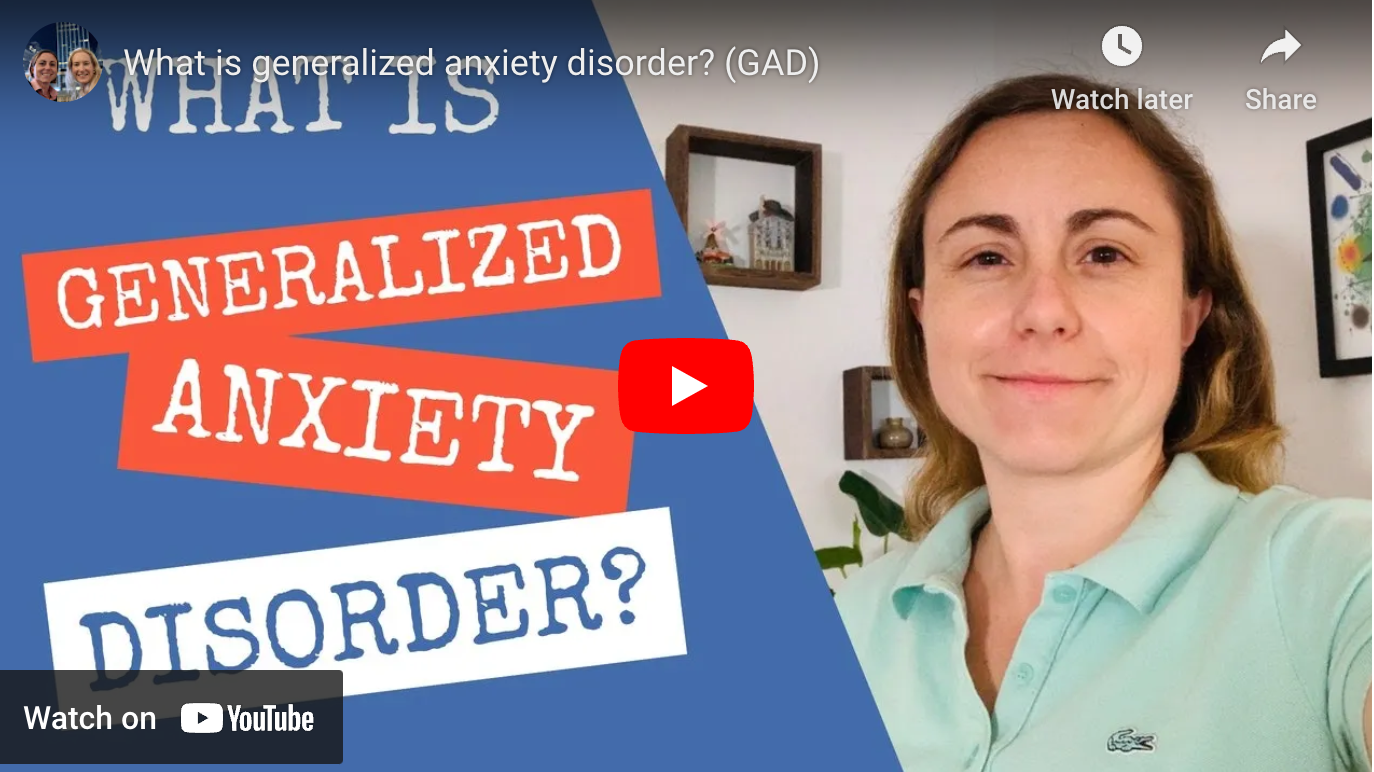Generalized anxiety disorder (GAD) is characterized by worrying frequently and excessively about a number of different topics. Unlike the person who occasionally worries about a thing or two, people with GAD have a difficult time controlling their worries, usually getting stuck in a vicious cycle of feeling anxious and worrying nonstop. It is sometimes referred to as the “what if” disorder, because people with GAD will constantly go, “What if I don't complete this assignment on time?” “What if my boss doesn't like my work?” “What if Iget fired?” “What if the yogurt I ate was expired?” What if? What if? What if?
To meet diagnostic criteria for GAD, people must also experience at least 3 of the following 6 symptoms: restlessness, fatigue, difficulties concentrating, difficulties sleeping, irritability, and muscle tension (particularly in the head, neck, and shoulders). Additionally, although not officially part of the diagnostic criteria, it is not uncommon for people with GAD to also experience gastrointestinal difficulties and decision paralysis.
It cannot be underestimated how intense the sleeping difficulties tend to be in the context of GAD. If you have GAD, you might worry before bed, might wake up at 3am with pressing worries, might dream about to-do lists, and might consistently wake up way too early. You might exhaust yourself from so much worrying, and yet, you have a difficult time stopping. In fact, the more tired you are, the more “cognitively depleted” you can get, which means, the harder it becomes to break away from your usual thinking patterns (such as excessive worrying).
GAD is a chronic condition, with a typical onset in early adulthood or even childhood and adolescence. As such, most people with GAD have been worriers for most – or at the very least a very big portion – of their lives. As a result, if you have GAD, you likely have an ambivalent relationship with your worries: on the one hand, you might notice the toll they take on your emotional and physical well-being, but on the other hand, you might fear that if you don’t worry enough about things, you might not not be able to cope. Everything will fall apart.
So how do people get stuck in this vicious cycle of excessive worrying and anxiety? Over two decades of scientific research suggests that worrying helps people avoid unpleasant feelings. Anxiety – and other emotions – can feel very intense and unpredictable. So, if you have GAD, you might try to control these feelings by worrying. The more you get in your head, the less you feel, and then, next time you are about to feel something, the more you get in your head, and so on. It can be said that GAD is a condition of overthinking and underfeeling.
Paradoxically, the more that you worry about the future, the more anxious and uncertain you feel, and the more you worry to control that anxiety. In fact, there’s a large body of scientific research showing that people who have difficulties tolerating uncertainty are more likely to have GAD (Buhr & Dugas, 2002). So, a key to fighting GAD is to learn to embrace uncertainty, something that, of course, is easy to say, but hard to do.
CBT approaches for GAD focus on helping you notice your worry triggers, evaluate whether your worries are excessive, and find alternative ways of thinking about stressful situations. For example, “What evidence do you have that this will happen?” “And if it does, what evidence do you have that you won't be able to cope?” “What would you tell a friend going through the same situation?”
More broadly, these cognitive exercises are ultimately all about learning to make room for uncertainty and develop greater confidence in yourself. The more you believe that you can cope, the less room there is for anxiety in your mind.
Further, CBT for GAD consists of conducting exposure exercises, where you would put yourself in some of those very situations that you find to be anxiety provoking. Sometimes this entails entertaining worrisome thoughts and learning to let go of them. Here, the practice of mindfulness or acceptance can be quite helpful, so some of the latest CBT treatments for GAD have been incorporating those techniques. At other times, exposure exercises consist of reducing reliance on rigid patterns of behavior (such as compulsive list making or other “just in case” behaviors)
I have spent most of my academic and clinical career working with clients with GAD. I received my Ph.D. in Clinical Psychology from Yale University, where I studied under Dr. Douglas Mennin (currently at Columbia University) who developed a CBT approach for GAD called Emotion Regulation Therapy. I also wrote my dissertation on GAD and have published dozens of scientific articles on GAD, worry, and perseverative cognition. I conducted further training at Weill Cornell Medical School / New York Presbyterian Hospital. I currently teach CBT to graduate students at Columbia University and Yeshiva University and to psychiatry residents at Mount Sinai Hospital. I have also written over 60 peer-reviewed articles on anxiety, OCD, rumination, and worry (for the full list of my academic publications, please go here). I currently write articles for Psychology Today, on GAD, including “Have You Been Procrastinating? Try the 50-80-100 rule” and “The 60-Second Approach to Managing Emotions”.
If you would like to learn more about our approach for GAD please get in touch.



